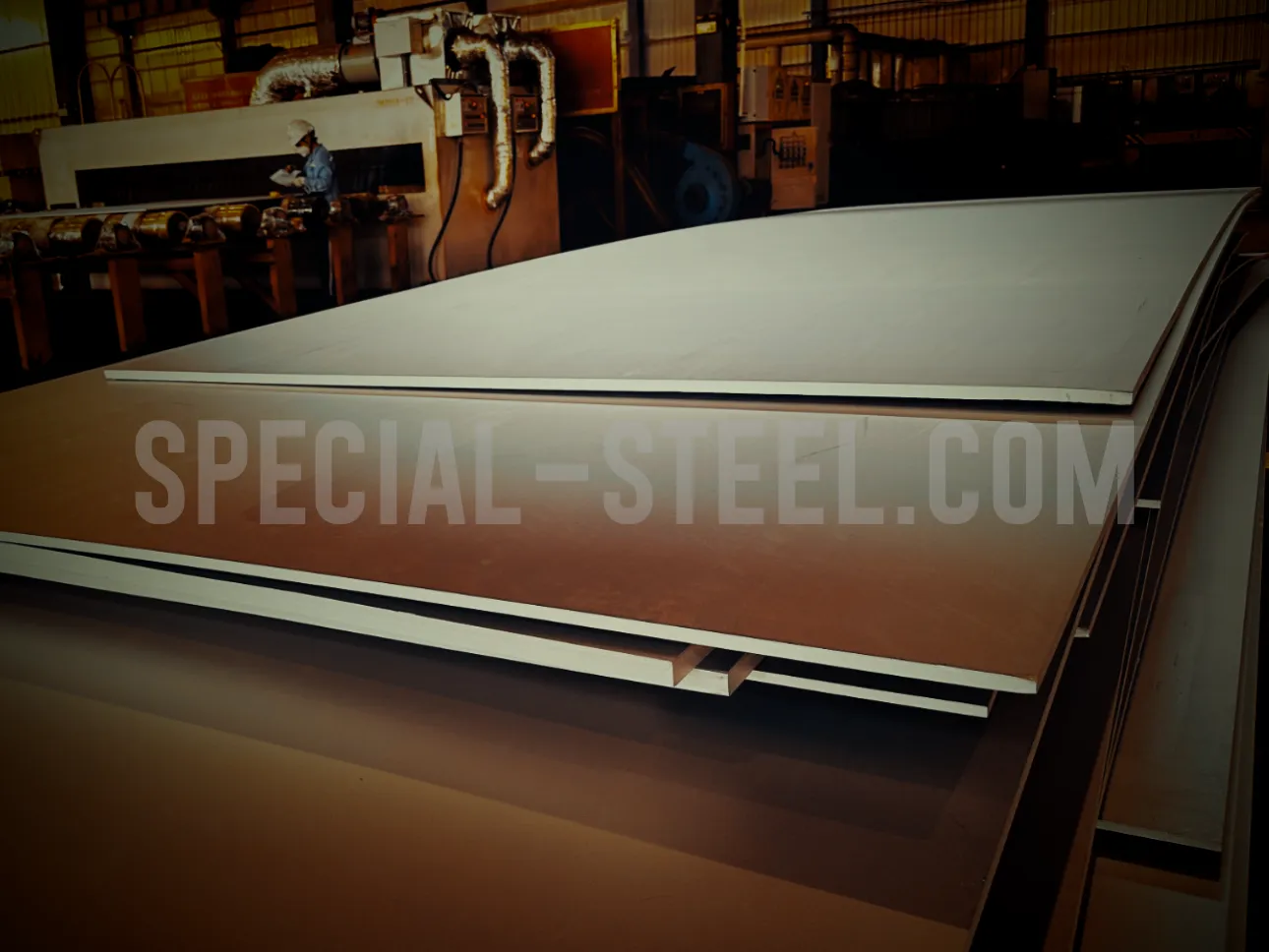SB443, UNS N06625, Inconel 625, NiCr22Mo9Nb, ХН75МБТЮ (EP602)
Inconel 625 (UNS N06625) is a nickel-chromium-molybdenum superalloy renowned for its high strength, corrosion resistance, and excellent performance in extreme environments. This article compares its global equivalents—SB443 (ASTM), NiCr22Mo9Nb (DIN/W.Nr. 2.4856), ХН75МБТЮ (GOST EP602)—providing authoritative data on composition, mechanical properties, and applications.

Table of Contents
What is SB443, UNS N06625, Inconel 625, NiCr22Mo9Nb, ХН75МБТЮ (EP602)?
Inconel 625 (UNS N06625), also known as SB443 (ASME), NiCr22Mo9Nb (DIN 2.4856), and ХН75МБТЮ (GOST EP602), is a nickel-based superalloy renowned for its exceptional corrosion resistance, high-temperature strength, and fatigue performance. The alloy’s composition—20-23% Cr, 8-10% Mo, and 3-4% Nb—enables outstanding resistance to oxidation, pitting, and creep deformation up to 980°C (1800°F). Its versatility spans aerospace, marine, oil & gas, and chemical industries, where it is used in turbine blades, exhaust systems, pressure vessels, and seawater components. Standardized under ASTM B443, DIN 17744, and GOST 5632, this alloy family maintains consistent mechanical properties across global designations, with minor variations in allowable impurities. Its excellent weldability and fabricability further enhance its adoption in critical engineering applications.
Applications
- Aerospace: Turbine blades, exhaust systems.
- Marine: Seawater piping, propeller blades.
- Oil & Gas: Downhole equipment, risers.
- Chemical Processing: Reactors, heat exchangers.
Chemical Composition (%)
| Element (%) | UNS N06625 |
SB443 |
NiCr22Mo9Nb, 2.4856 |
EP602, ХН75МБТЮ |
|---|---|---|---|---|
| Ni | ≥58.0 | ≥58.0 | ≥58.0 | ≥55.0 |
| Cr | 20.0–23.0 | 20.0–23.0 | 20.0–23.0 | 19.0–22.0 |
| Mo | 8.0–10.0 | 8.0–10.0 | 8.0–10.0 | 7.5–9.5 |
| Nb+Ta | 3.15–4.15 | 3.15–4.15 | 3.15–4.15 | 2.5–4.5 |
| Fe | ≤5.0 | ≤5.0 | ≤5.0 | ≤5.0 |
| C | ≤0.10 | ≤0.10 | ≤0.10 | ≤0.10 |
Minor elements (Si, Mn, Al, Ti, P, S) comply with ASTM B443, DIN 17744, and GOST 5632 standards.
Material Properties
Room Temperature Properties
| Standard | Yield Strength (MPa) | Tensile Strength (MPa) | Elongation (%) | Hardness (HRB) |
|---|---|---|---|---|
| ASTM B443 | ≥414 | ≥827 | ≥30 | ≤100 |
| DIN 2.4856 | ≥450 | ≥850 | ≥30 | ≤220 HV |
| GOST EP602 | ≥420 | ≥800 | ≥30 | ≤200 HB |
High-Temperature Strength (650°C / 1200°F)
| Alloy | Yield Strength (MPa) | Tensile Strength (MPa) | Creep Rupture (1000h, MPa) |
|---|---|---|---|
| UNS N06625 | 350 | 700 | 200 |
| NiCr22Mo9Nb | 340 | 680 | 190 |
Physical Properties
| Property | Value (UNS N06625) |
|---|---|
| Density (g/cm³) | 8.44 |
| Melting Range (°C) | 1290–1350 |
| Thermal Conductivity (W/m·K) | 9.8 (at 100°C) |
| Electrical Resistivity (μΩ·m) | 1.28 |
Heat Treatment
Standard Heat Treatment by Alloy Designation
| Alloy Standard | Solution Annealing | Stress Relieving | Aging/Hardening |
|---|---|---|---|
| ASTM B443 (UNS N06625 / SB443) | 1100-1200°C (2012-2192°F), rapid cool (water/air) | 900°C (1652°F) for 1-2h (optional) | Not applicable (cold work hardening only) |
| DIN 2.4856 (NiCr22Mo9Nb) | 1100-1150°C (2012-2102°F), fast cool | 850-950°C (1562-1742°F) | - |
| GOST EP602 (ХН75МБТЮ) | 1150-1200°C (2102-2192°F), water quench | 900°C (1652°F) for welded parts | - |
| JIS NCF 625 | 1100-1150°C (2012-2102°F), rapid cool | - | - |
Key Process Details
Solution Annealing
- Primary treatment for all variants to dissolve secondary phases and optimize corrosion resistance.
- Cooling Rate Critical: Must exceed 55°C/min (100°F/min) through 540-760°C (1000-1400°F) to prevent carbide precipitation.
Stress Relieving
- Applied after welding/cold working (e.g., 900°C/1652°F for 1h per 25mm thickness).
- Avoid 650-870°C (1200-1600°F): Risk of sensitization in NiCr22Mo9Nb (DIN).
Special Cases
- Cold Worked Grades (H1150): Annealed + 30-50% cold reduction for higher strength (e.g., ASTM B443).
- GOST EP602: Requires faster quenching than ASTM/DIN grades due to stricter δ-phase control.
Microstructure Control
- ASTM/DIN: Annealed microstructure = austenitic matrix with dispersed MC carbides (NbC).
- GOST EP602: Higher Nb content demands tighter solution annealing to avoid brittle Laves phase.
Industry-Specific Variations
- Aerospace (AMS 5666): Stricter solution annealing at 1150±15°C (2102±27°F).
- Nuclear (ASME SB443): Mandatory stress relief for pressure vessels.
Processing Performance
Hot Working
- Forging & Rolling: Performed at 980–1175°C (1800–2150°F); avoid temperatures below 930°C (1700°F) to prevent cracking.
- Preheating: Required for heavy sections to reduce thermal stress.
- Cooling: Air cooling after hot working is sufficient; rapid quenching is unnecessary.
Cold Working
- Work Hardening: Rapidly hardens during deformation; intermediate annealing (1100°C/2012°F) is needed for severe forming.
- Machinability: Poor (20% of free-cutting steel); use carbide tools, low speeds, high feed rates, and ample lubrication.
- Ductility: Moderate (30% elongation); suitable for slow bending, deep drawing, and hydroforming.
Welding
- Recommended Methods: TIG (GTAW), MIG (GMAW), SMAW with matching filler (e.g., ERNiCrMo-3 / AWS A5.14).
- Precautions:
- No preheat required for thin sections (<6 mm).
- Post-weld stress relief at 900°C (1650°F) for thick welds or corrosive environments.
- Avoid sulfur-containing lubricants to prevent hot cracking.
- Weldability Rating: Excellent (comparable to austenitic stainless steels).
Cutting & Grinding
- Use ceramic or CBN (cubic boron nitride) tools for precision machining.
- Avoid excessive heat buildup to prevent work-hardened layers.